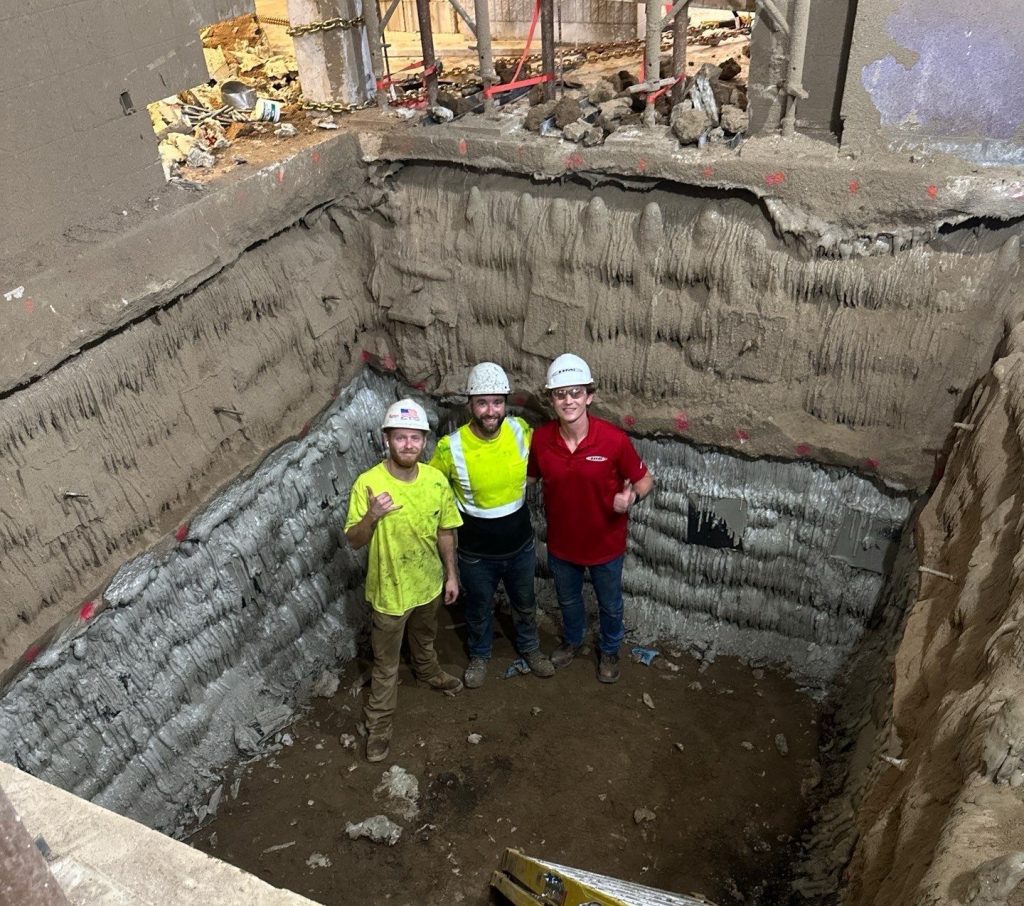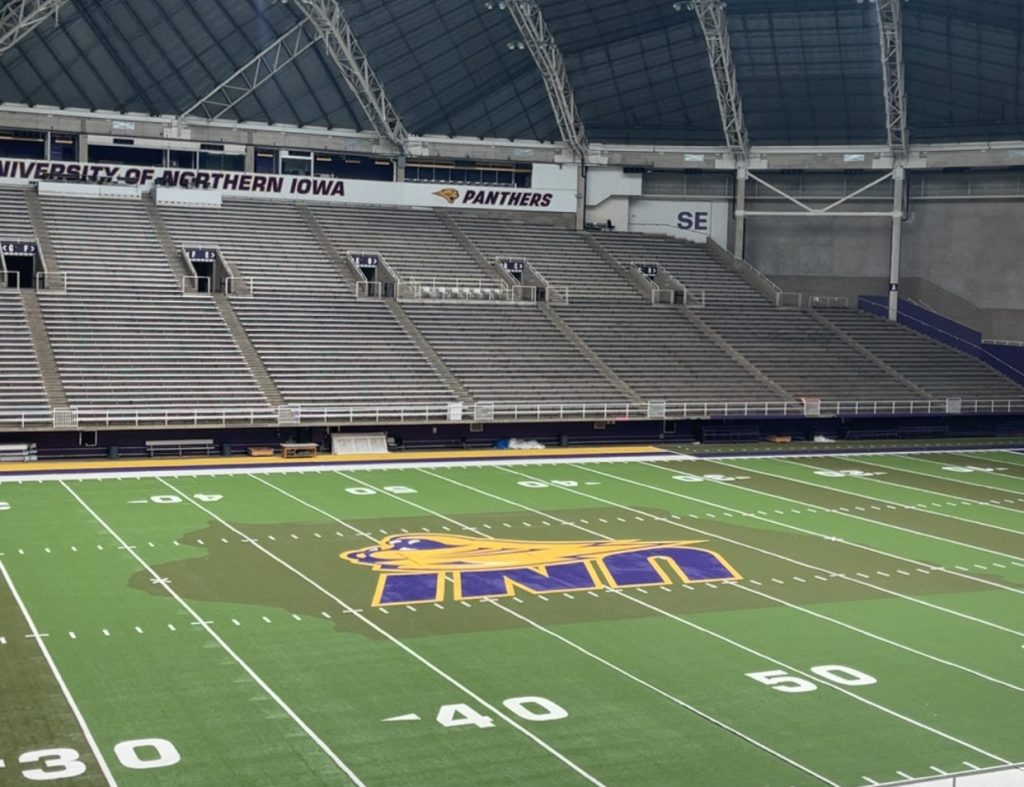When Field Conditions Changed the Plan: HMI Engineering Agility at the Iowa Dome Saved the Day
The value of having experts at your fingertips (via phone & text) cannot be measured. That is what the HMI service and engineering teams bring to your company.
In geotechnical work, even the most thorough pre-construction investigation can’t eliminate surprises. The true test of a successful project often lies not in perfect conditions—but in how the team responds when the ground says otherwise. That’s exactly what happened during the development of a new elevator shaft at the University of Iowa Dome.
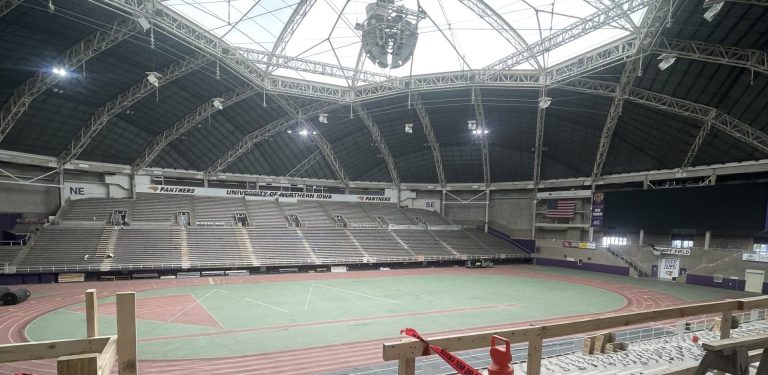
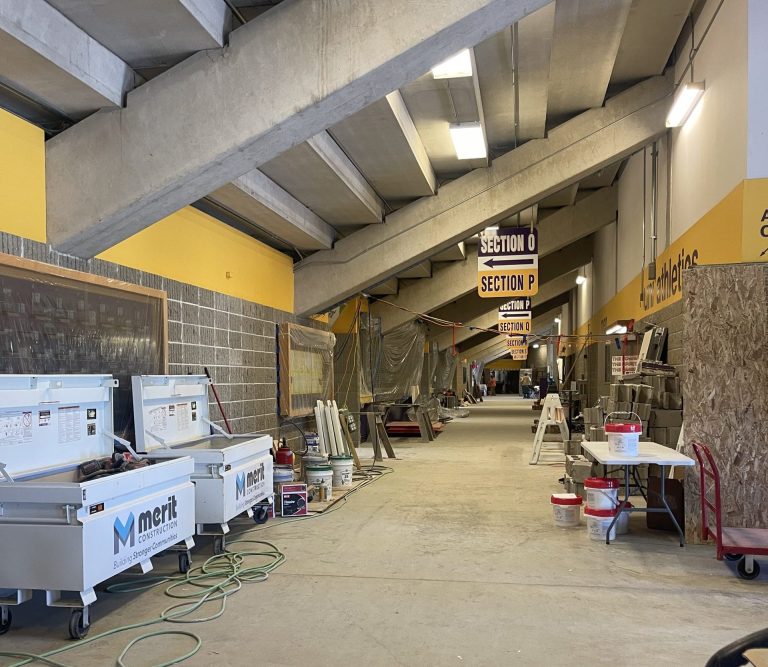
The Original Plan
An HMI customer was asked to evaluate a project at the University of Northern Iowa Dome. A soil boring conducted within the proposed elevator shaft indicated sandy fill soils with few fines. These conditions reported are ideal for pre-excavation permeation grouting using HMI’s Soil-Link™ acrylate gel. This product is designed to permeate, bind and stabilize the soil/gel matrix and reduce the risk of cave-ins during excavation.
The plan was simple: inject the gel to create a firm subgrade shell around the future shaft. This shell would hold back perimeter soils during excavation.
New Signs of Trouble
Soon after the initial excavation began it was clear something unanticipated was occurring. Thick layers of clay were visible in the excavation face, not the soil type suitable for permeation grouting due to their low permeability. These clay layers caused areas of shallow excavation (at this time) to begin sloughing. This triggered an immediate response from HMI’s in-house engineering team, led by geotechnical engineer Will Sublette.
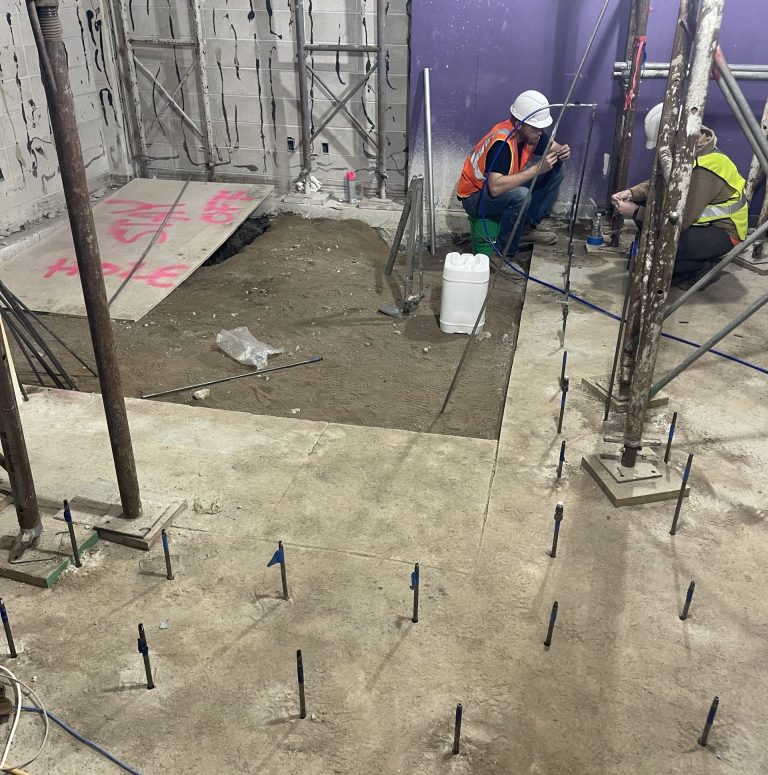
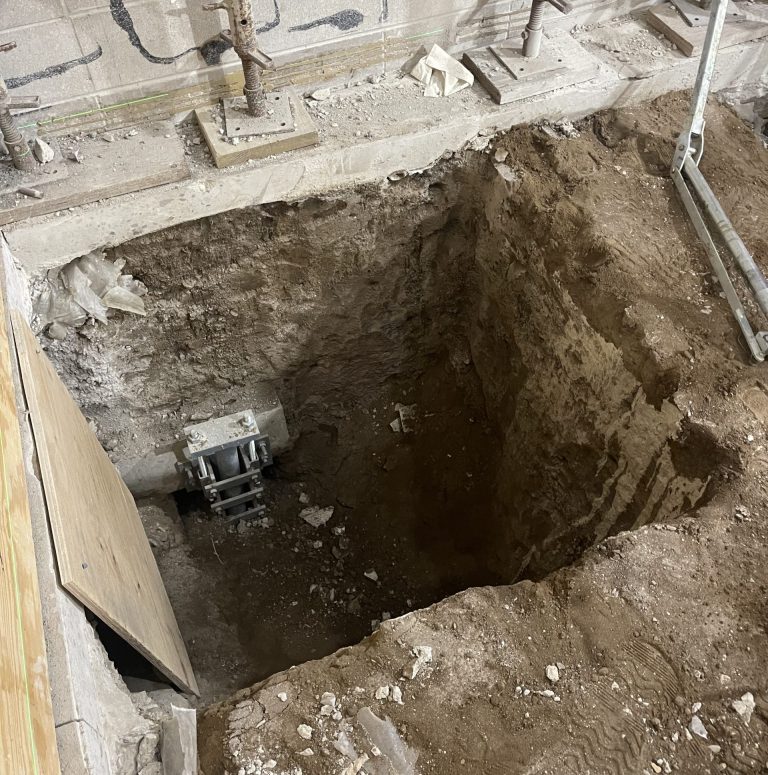
The True Subsurface Conditions
New soil evaluations revealed a saturated clay layer with high fines content, entirely absent from the earlier samples. This native clay was highly expansive when wet, capable of generating significant lateral pressure and volumetric change.
Water introduced during hydro-vac excavation and grouting, caused the clay to swell. While the anticipated course sands were solidified with gel, the clay soils could not be solidified by grout, leaving untreated layers in the excavation. The ungroutable layers of clay were the true culprit. Had the clay soils been identified during investigation, permeation grouting would not have been recommended as a viable option.
Engineering Plan Pivot
In response, HMI’s team—working in collaboration with the project engineer of record—proposed a revised solution built around mechanical retention:
Soil nails would be installed through pre-drilled holes which would be bonded in place using HMI 501 polyurethane foam. This would form a deep anchor system within the mixed soils. The soil nail system was load-tested to over 16,000 lbs, confirming design adequacy before implementation.
To contain the soil face, a structural mesh was applied and coated with HMI 601 foam, creating a robust barrier wall of reinforced polyurethane foam. Polyurethane foam was also used to fill and stabilize voids beneath concrete slabs.
Work resumed using a controlled, four-foot staging excavation process, with the mesh and nail system installed incrementally down the shaft depth to manage soil pressure in real time.

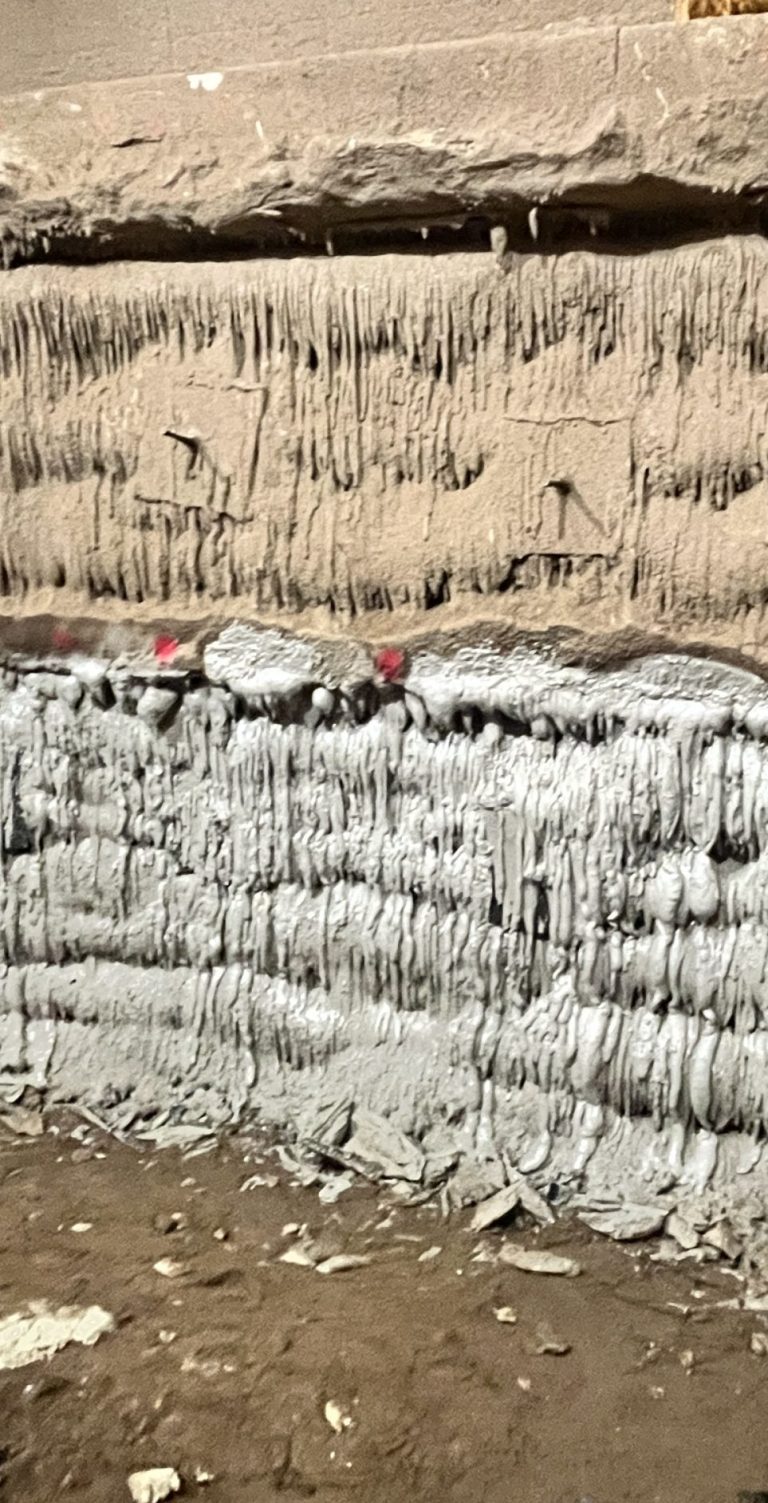
Successful Outcome
Despite a fundamental shift in subsurface understanding, the project was completed safely, efficiently, and with minimal delay.
The success of the project was driven by HMI’s in-house engineering expertise, along with its responsiveness and ability to reassess site conditions, redesign in real time, and coordinate effective field implementation. Just as critical was the contractor’s outstanding resilience and technical skill, whose precise execution and adaptability under challenging conditions played a central role in moving the project forward. Together, the collaboration between field and engineering teams was key to delivering a successful outcome.
Takeaways
It is not critical that you understand each engineering term above. (Although Googling a few to increase your understanding and knowledge is not a bad idea.) What is critical is that:
- You should never initially say ‘never’ when approached with a project or challenge.
- Surprises and challenges always crop up on projects and you should expect them and never be overwhelmed by them.
